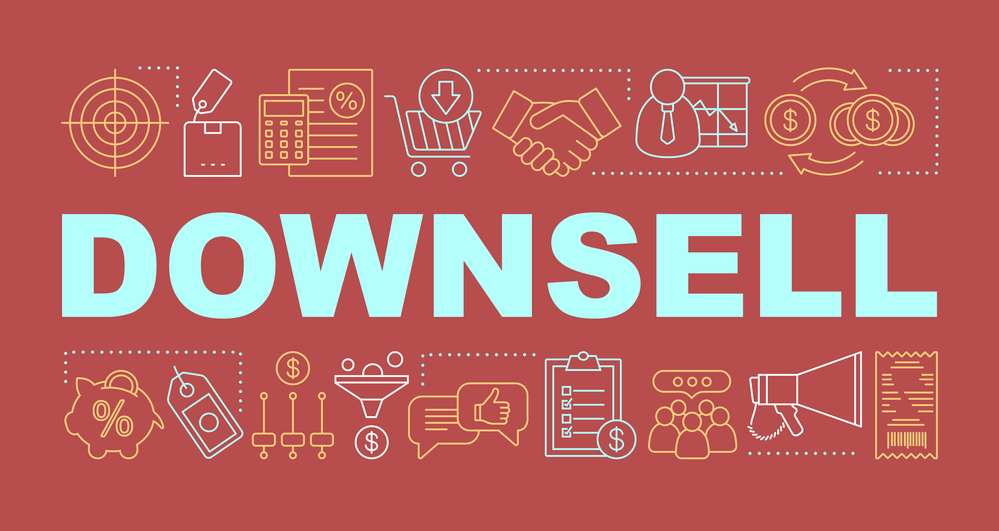
Branding vs Direct Response Marketing: Use the Best of Both
Apr 15, 2024 3 minutes
Are you looking to take your marketing strategy to the next level and leave your competitors in the dust? The secret weapon you’ve been searching for is right under your nose: branding.
That’s right, the same branding tactics that big corporations use to build loyal customer bases and dominate their industries can be harnessed by savvy direct response marketers like you.
You might be thinking, “But wait, isn’t direct response marketing all about driving immediate action and measurable results? How does branding fit into that equation?” The truth is, direct response and branding are two sides of the same coin. By incorporating branding elements into your direct response campaigns, you can create a powerful synergy that amplifies your results and creates longevity for your business.
What is Direct Response Marketing?
Direct response marketing is a type of marketing strategy designed to elicit an immediate response or action from the target audience. Unlike traditional brand marketing, which focuses on building brand awareness and creating emotional connections with customers over time, direct response marketing aims to drive specific, measurable results in a short period.
The primary goal of direct response advertising is to persuade potential customers to take a specific action, such as making a purchase, signing up for a newsletter, downloading a resource, or requesting more information. This approach relies on compelling, personalized content that clearly communicates the value proposition and includes a strong call-to-action (CTA).
Direct response marketing can be executed through various channels, including:
- Direct mail
- Email marketing
- Landing pages
- Social media ads
- Paid search ads
- TV and radio commercials
Key characteristics of direct response marketing include:
- Trackable and measurable results: Direct response campaigns are designed to be easily tracked and analyzed, allowing marketers to measure their return on investment (ROI) and optimize their strategies accordingly.
- Targeted audience: By leveraging data and customer insights, direct response marketers can create highly targeted campaigns that resonate with specific segments of their audience.
- Personalized and compelling content: Direct response content is crafted to capture the audience’s attention, address their pain points, and clearly communicate the benefits of taking action.
- Sense of urgency: To encourage immediate action, direct response campaigns often incorporate a sense of urgency, such as limited-time offers or exclusive promotions.
By focusing on driving immediate, measurable results, direct response marketing enables businesses to quickly generate leads, boost conversions, and grow their customer base.
Did you know DR marketers are high risk?
What is Branding?
Branding or brand advertising is the process of creating a unique identity and image for a company, product, or service in the minds of consumers. It encompasses all the elements that help distinguish a brand from its competitors, such as the brand name, logo, tagline, brand messaging, and overall customer experience.
The primary goal of branding is to establish a strong, positive, and lasting impression in the minds of potential customers. By creating a consistent and memorable brand identity, companies aim to build brand awareness, foster emotional connections, and ultimately, cultivate brand loyalty among their target audience.
Key characteristics of branding include:
- Consistency: Successful branding requires a consistent application of brand elements across all marketing channels and touchpoints, from the company website and social media profiles to packaging and customer service interactions.
- Emotional connection: Strong brands often evoke emotions and create a sense of belonging among their customers, tapping into their desires, aspirations, and values.
- Differentiation: Effective branding helps companies stand out from their competitors by communicating their unique value proposition and brand personality.
- Long-term focus: Unlike direct response marketing, which emphasizes short-term results, branding is a long-term strategy that aims to build and maintain a positive reputation over time.
Examples of branding campaigns and tactics include:
- Content marketing: Creating valuable, informative, and engaging content that aligns with the brand’s messaging and resonates with the target audience.
- Brand storytelling: Developing a compelling narrative that communicates the brand’s history, values, and mission, helping to create an emotional connection with customers.
- Influencer partnerships: Collaborating with industry influencers or thought leaders to expand brand reach and credibility.
- Consistent visual identity: Ensuring that all visual elements, such as logos, color schemes, and imagery, are consistent across all marketing materials and channels.
Similarities Between Direct Response and Branding
While direct response marketing and branding are distinct approaches, they share some common ground in their ultimate goal of influencing potential customers and driving sales. Both strategies rely on a deep understanding of the target audience, their needs, desires, and behaviors, to craft messages that resonate and inspire action.
Here are some key similarities between direct response marketing and branding:
- Customer-centric approach: Both direct response and branding campaigns are built around the customer. They seek to understand the target audience’s pain points, aspirations, and preferences, and tailor their messaging accordingly.
- Multi-channel deployment: Direct response and branding campaigns can be executed across various marketing channels, including television, radio, print, digital, and social media. The choice of channels depends on where the target audience is most likely to engage with the brand.
- Storytelling and emotional appeal: While direct response marketing is often associated with hard-hitting, action-oriented messaging, it can also incorporate elements of storytelling and emotional appeal, similar to branding campaigns. Both approaches aim to create a connection with the audience and make the brand or offer memorable.
- Focus on customer journey: Direct response and branding campaigns both consider the customer journey, from initial awareness to post-purchase experience. They aim to guide potential customers through the marketing funnel, providing relevant information and experiences at each stage.
- Continuous optimization: Both direct response and branding campaigns require continuous monitoring, testing, and optimization to improve their effectiveness. Marketers analyze data and feedback to refine their messaging, targeting, and channel mix over time.
If you’re an online merchant, then you NEED a high-risk processor.
Differences Between Direct Response and Branding
While direct response marketing and branding share some similarities, there are several key differences between the two approaches that every digital marketer should understand.
- Focus and objectives: Direct response marketing focuses on driving immediate action and generating short-term results, such as sales, leads, or sign-ups. In contrast, branding concentrates on building long-term relationships, brand loyalty, and overall brand equity.
- Messaging and content: Direct response marketing emphasizes specific offers, promotions, and clear calls-to-action (CTAs) to persuade the target audience to take immediate action. Branding, on the other hand, prioritizes storytelling, emotional connections, and communicating the brand’s overall value and personality.
- Metrics and measurement: Direct response campaigns rely heavily on measurable metrics, such as response rates, conversion rates, customer acquisition costs, and return on investment (ROI). Branding success can be more difficult to quantify, as it often involves intangible factors like brand awareness, perception, and sentiment.
- Audience targeting: Direct response marketing targets specific segments of the audience that are most likely to take immediate action based on their interests, behaviors, and purchase intent. Branding aims to reach a broader audience and build awareness and recognition across various customer touchpoints.
- Creative approach: Direct response ads often feature clean, simple designs with compelling copy and prominent CTAs to drive action. Branding creative may be more experimental, focusing on memorable visuals, entertaining content, and consistent brand elements to create a lasting impression.
- Timeframe and consistency: Direct response campaigns are typically short-term and can vary in terms of offers, messaging, and creative based on performance data. Branding requires a consistent application of brand elements, messaging, and customer experience over an extended period to build trust and recognition.
We will help you prep for growth!
How Direct Response Marketers Can Use Branding Tactics
While direct response marketing and branding are distinct strategies, savvy marketers can incorporate branding tactics into their direct response campaigns to build a loyal customer base and drive long-term success. Here are some ways direct response marketers can use branding tactics:
- Develop a strong brand identity: Establish a clear and consistent brand identity across all marketing channels, including your website, social media profiles, and advertising creative. This includes using a consistent logo, color scheme, typography, and messaging that reflects your brand’s personality and values.
- Use content marketing: Create valuable, informative, and engaging content that aligns with your brand’s messaging and resonates with your target audience. This can include blog posts, videos, infographics, and social media posts that educate, entertain, or inspire your audience while subtly promoting your brand.
- Incorporate brand storytelling: Develop a compelling narrative that communicates your brand’s history, mission, and values. Use this story to create an emotional connection with your audience and differentiate your brand from competitors. Incorporate elements of your brand story into your direct response ads to make them more memorable and impactful.
- Leverage social media: Use social media platforms to build brand awareness, engage with your target audience, and establish your brand as a thought leader in your industry. Share valuable content, participate in relevant conversations, and respond to customer inquiries and feedback to build trust and credibility.
- Ensure consistent messaging: Maintain consistent brand messaging across all your direct response marketing campaigns and customer touchpoints. This includes using a similar tone, style, and key messages in your ad copy, landing pages, and follow-up communications to create a cohesive brand experience.
- Provide excellent customer service: Deliver exceptional customer service to build a positive reputation and encourage brand loyalty. Respond promptly to customer inquiries, address concerns, and go above and beyond to ensure customer satisfaction. Positive customer experiences can lead to word-of-mouth referrals and increased brand advocacy.
By incorporating these branding tactics into their direct response campaigns, marketers can create a more holistic and effective marketing strategy that drives both short-term conversions and long-term brand equity. The key is to find the right balance between the two approaches and continuously test and optimize your campaigns based on performance data and customer feedback.




